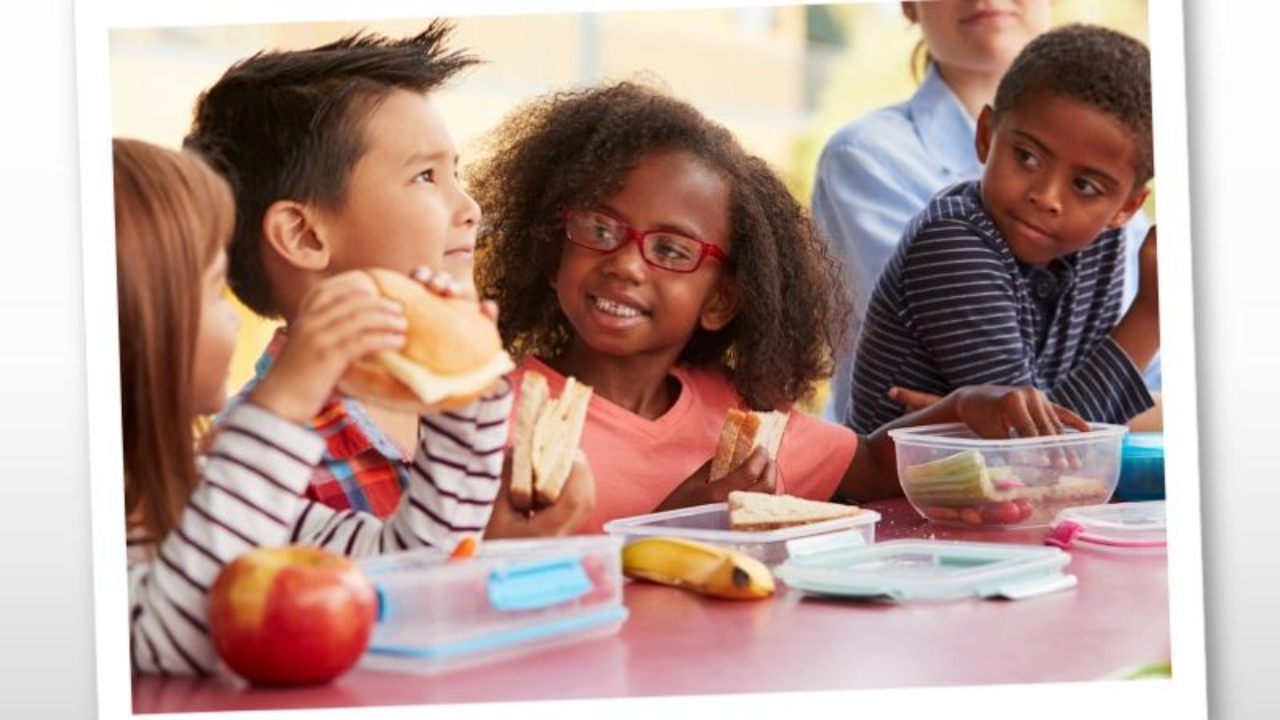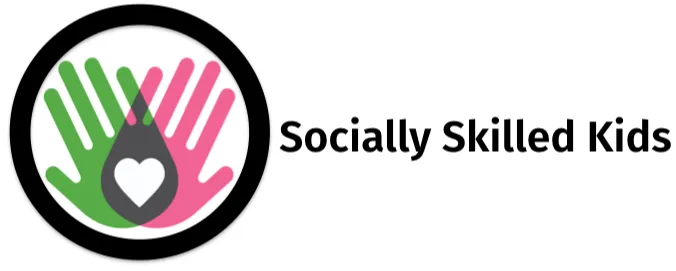Teaching Special Education Students Conversational Turn Taking
Jul 16, 2020

Engaging in successful conversations is an important social skill that can be very challenging for our kiddos with special needs.
Probably the biggest reason that basic and friendly conversations are challenging for children's development of communication skills, is because, like so many things, there are actually many language skills involved Conversation may be one word, but the skills involved in executing it, are numerous and complex.
Conversations involve complex social skills such as, Perspective Taking and Self-Regulation, which are often difficult for students with special needs.

Here are my Top 10 picks for the most important skills needed to be taught to special education students, to help them implement effective ways to engage in better conversations with their peers:
1. Physical Proximity
How many times have you seen your students talking to someone as they are walking away or as the other person is walking away, talking to someone who is too far away from them to gain their attention or be heard, talking to someone from behind, or when they are already talking to someone else, etc. One of the first things I teach my students about starting and having a conversation, is the necessary physical proximity.
Like real estate… it’s all about; location, location. location!
2. Eye Contact/Body Orientation
Closely related to physical proximity, eye contact is an essential skill to teach our students to improve their conversations and over-all social interactions. Some students with special needs, especially autism, really struggle with this skill. For some, I focus more on Body Orientation. That is, if eye contact is just to uncomfortable for a student, “pointing their body” toward the person they are trying to have a conversation with, is the next best thing.
If a student cannot make eye contact, but can stand about an arms length away from their conversational partner and point their toes and shoulders toward their conversational partner(s), this is usually enough to signal them that the person is talking to them.
These students usually need some assistance with where to “point their eyes” as well. If not able to point them at the conversational partner, {for brief periods of time – no staring!} then I teach them to “look in the box” and make an imaginary box around the other person’s face. This helps some students to keep their gaze close, vs. across the room or in the opposite direction.
3. Active Listening

Many of my students are so focused on thinking about what they want to say, that they are not actively listening to what the other person is saying. A conversation won't stay on a given topic and may go something like this:
- Student 1: “I got to the next level in Mario Kart”
- Student 2: “My dad’s coming home from his trip tomorrow.”
- Student 1: “I’m the best at Mario Kart!”
- Student 2: “My dad always brings me a new Lego set when he comes back from a trip.”
How many conversations like that one, have you witnessed? A lot, right?!
I use a wide range of visual prompts as well as explicit teaching to help my students focus on listening, vs. thinking about what they want to say.
Many of our students are worried that they might forget what they want to say, if they stop thinking about it, even for a moment. Others are very open and honest {i.e. have no filter} and tell me {and their conversational partner(s) that they are uninterested in what the other person has to say, and still others, are just too impulsive to wait for someone else to take their turn in a conversation.
Lots to work on here!
4. Be Pleasant: Mind your Word Choice, Voice Volume and Tone
Do your students yell at, pick on, insist they are right, or whine during their conversations? Mine do! Nobody wants to talk to somebody who’s doing that! Either that, or the conversation becomes a yelling match! Many of my student don’t even realize they are doing it. Others, know, but don’t see the value or need to changing it.
This alone, can be weeks if not months of explicit teaching.
I often keep a list of “caution words” on the white board, during my small group sessions. Some of those words/phrases are; of course, no offense but, hey, you didn’t know that? duh!
5. Non-Verbal Communication: Facial Expressions and Body Language/Gestures
Many of our students use off putting non-verbal signals while engaging in conversations with others. Whether it’s an unpleasant facial expression, bored or distracted body language or rude gestures, these forms of communication are often misunderstood or overlooked by our kiddos with special needs.
Here is an explicit activity that can help you teach this important skill.
6. Self-Regulation: Don’t Interrupt
Most of our students struggle with self-regulation. Sometimes it’s because of poor self-control, sometimes it’s because their afraid they will forget what they have to say if they don’t get it out right away. Many children worry they will not get their turn to talk at all…based on past experiences with other kids who struggle to engage in conversations.
To help with this, I like to teach my students the difference between interrupting and interjecting. Interrupting is when you speak in the middle of someone else’s sentence and it is to meet your own needs. Interjecting is when you say something…usually at the end of the other person’s sentence, and it is because you are so excited about what they are saying and/or you have something that will add value to or support what what they are saying.
Here is a social story that talks about No Blurting.
And here are some of my favorite picture books that can help teach your students how to stop interrupting:

7. Respond
I don’t know about you…but I spend a lot of time teaching my students to respond to each other. Not responding is a real pet peeve of mine. After all, without responding, you really don’t have a conversation. You just have two {or more} people talking in close proximity…lol! But that is not, a conversation.
One of the best ways to support your students in developing this skill is to simply not accept, not responding. What do I mean by that? As adults, we frequently accept less than desirable behaviors from our students, as a way of being polite. But I think that we can often be enabling our students in the name of being polite. When my students do not respond to something I say to them, I make sure to repeat myself, over…and over…and over…and more and more obviously, until they have that light bulb moment…and respond.
They always have the funniest look on their faces! Like, what is this crazy lady doing?! But then…they get it! And they almost always laugh, and then R-E-S-P-O-N-D!
I have lots of fun resources to help you teach your students how to respond to others. Here is on of my favorite Responding To Others activities.
8. Let It Go: Don’t Over-Correct
Do you have students who correct others on every little thing?! Not only does it damage relationships, but it really slows down and interrupts the flow of a conversation. I teach my students to let the little things go. This is not an easy concept. What is a “little thing?” And for our black and white thinkers…letting even little things go, is hard. It takes practice and patience.
It can be helpful to teach students the difference between telling the truth and being polite {for little things that are not going to change the meaning or outcome of something}.
9. Be Clear and Get To The Point
Our students often need explicit instruction on how to “tell a story.” They need instruction on giving enough information or background to be clear, making repairs {without getting offended} when someone doesn’t understand them, and getting to the point of the story, without giving too many or unrelated details.
10. Perspective Taking and Empathy
Last but not least, our students need to gain and improve their skills in perspective taking and empathy. None of the above skills can be accomplished without some level of perspective taking and/or empathy {sometimes rote skills can be taught/learned but they will be so much more meaningful if they are more natural}.
Need resources to explicitly teach a wide range of perspective taking skills? Check out this Perspective Taking Mega Bundle
Conversational Turn Taking
Many of these social skills need to occur at the same time, in order to perform the most basic of conversation skills; Turn Taking
So while turn taking in and of itself, may be basic…being able to do it within the context of a conversation, is quite complex and challenging for our students with special needs.
Unlike a board game, for example, there are no visual cues to tell us when we should/should not “go.” And the rules of conversation turn taking are vast and ever changing.
To help with this, I have created a fun and easy to use Conversational Turn Taking Visual/Activity to help you teach and practice this important skill.
This activity uses visual and tactile modalities to help the students better understand when, how and what to say, during a conversation.
Three versions of the visual/activity are included; one with text, one with pictures and one with nothing on it so you can use it to test your students knowledge after explicit teaching or so that you can write in your own text/pictures to individualize for your student’s needs.

Grab This Activity And Much More!
Simply enter your name and email address in the form below and you’ll have immediate access to this digital download. By completing the form, you’ll also be joining thousands of like-minded teachers who have already signed up for my free club, The Teacher’s Lounge.
This is a 100% free club where you get awesome social skills resources delivered straight to your in-box each week!
These resources include my monthly Tips & Tricks newsletter {for a particular social skill each month}, as well as a variety of posters, visuals, games and activities designed to support the identified social skill.
Would you like to receive specially designed, creative and interactive FREE teaching resources?
Join us in the Teacher’s Lounge!

